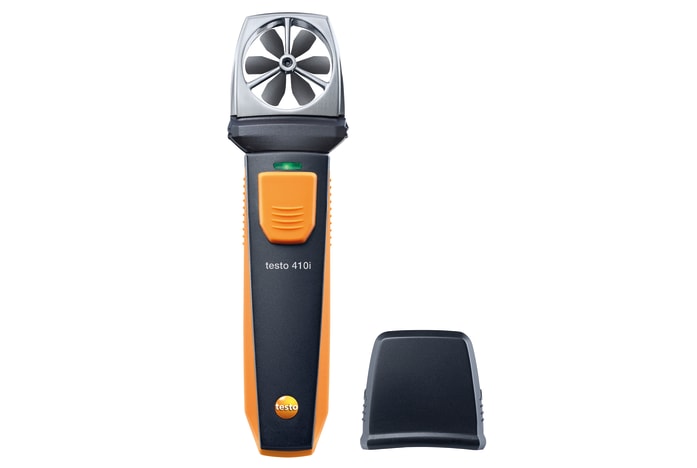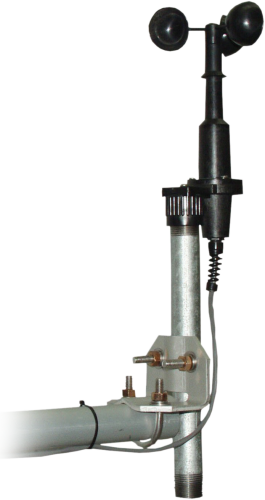How to Maintain and Take Care Of Your Anemometer to Make Sure Long Life
How to Maintain and Take Care Of Your Anemometer to Make Sure Long Life
Blog Article
Anemometers Introduced: Understanding Their Relevance in Ecological Tracking and Precaution
The duty of anemometers in ecological surveillance and safety procedures is commonly taken too lightly, yet their importance is indisputable. From weather forecasting to air travel safety, anemometers play a crucial role in supplying precise data that notifies decision-making procedures and enhances total security.
Background of Anemometers
The evolution of anemometers can be traced back to the ancient human beings where simple wind determining gadgets were very first used. One of the earliest well-known anemometers was the hemispherical cup anemometer invented by Leon Battista Alberti in the 15th century.
In the 18th century, the prominent scientist John Thomas Romney Robinson presented the Robinson anemometer, which featured 4 hemispherical cups mounted on horizontal arms that extended from a central axis. This layout ended up being a criterion in atmospheric dimensions because of its accuracy and reliability. Over the years, innovations in innovation brought about the development of more modern-day anemometers, consisting of ultrasonic anemometers and laser Doppler anemometers, offering boosted accuracy and efficiency in measuring wind speed and instructions. The background of anemometers showcases an amazing journey of advancement and progress in the area of meteorology.
Sorts Of Anemometers
Throughout the area of meteorology, different kinds of anemometers have been established to accurately gauge wind rate and direction. The most common kind is the cup anemometer, which includes 3 or four cups installed on horizontal arms that rotate with the wind. As the cups rotate, the rate at which they revolve is straight proportional to the wind rate. An additional commonly made use of kind is the vane anemometer, which features a tail or fin that straightens itself with the wind instructions. This positioning allows the device to figure out the wind instructions. Sonic anemometers make use of ultrasonic signals to determine wind speed and instructions precisely. They are typically used in research study applications as a result of their high precision. Hot-wire anemometers run based upon the principle that the cooling effect of wind on a warmed cable is symmetrical to the wind rate. These anemometers are appropriate for measuring reduced wind rates with high precision. Each kind of anemometer has its strengths and is picked based on the details requirements of the tracking job at hand.
Applications in Weather Forecasting
Having talked about the numerous types of anemometers utilized in meteorology for determining wind speed and direction, it is necessary to explore their practical applications in the field. Anemometers play a crucial role in weather forecasting by supplying precise and real-time information on wind problems (anemometer). Meteorologists utilize anemometers to check wind speed and instructions to forecast weather condition patterns, issue cautions for severe weather occasions like hurricanes, storms, and twisters, and evaluate climatic conditions for aviation security
In meteorology, anemometers help in recognizing regional and regional wind patterns, which are essential for anticipating weather modifications and establishing climatic fads. These devices are additionally made use of in study to study microclimates, city warm islands, and air contamination dispersion. In addition, anemometers are used in agriculture to enhance crop administration techniques, such as watering and pesticide application, learn the facts here now based on wind conditions.
Relevance in Aeronautics Safety And Security
An essential facet of ensuring air travel safety depends on the thorough monitoring of wind conditions making use of anemometers. Anemometers play a crucial duty in aviation by giving real-time information on wind speed and direction, aiding pilots in making informed choices throughout take-off, touchdown, and flight. Solid and uncertain winds can considerably impact airplane procedures, making it important for air travel authorities to depend on precise wind dimensions to ensure the security of guests and crew.

In the dynamic environment of aviation, where also small adjustments in wind rate and instructions can have extensive results, anemometers stand as essential devices for advertising risk-free and safe and secure air traveling.
Function in Environmental Study
Anemometers play a critical function in environmental study by providing vital data on wind speed and instructions. By precisely measuring wind attributes, anemometers aid researchers evaluate the motion of contaminants in the air, examine the influence of commercial discharges, and anticipate the spread of impurities in the environment.


Verdict
In conclusion, anemometers have played an essential role in environmental monitoring and precaution. With an abundant background and various kinds available, these devices have been widely utilized in meteorology, air travel safety, and ecological research study. Recognizing the importance of anemometers is vital for precisely determining wind speed and instructions, which is crucial for predicting climate patterns, making sure safe aviation operations, and performing environmental research studies - anemometer. Their payments to these fields can not be ignored.
One of the earliest well-known anemometers was the hemispherical cup anemometer designed by Leon Battista Alberti in the 15th important source century. Over the years, developments in modern technology led to the growth of more contemporary anemometers, consisting of ultrasonic anemometers and laser Doppler anemometers, using enhanced precision and efficiency in determining wind speed and direction. Hot-wire anemometers run based on the principle that the cooling impact of wind on a heated cable is proportional to the wind speed. Meteorologists make use of anemometers to keep an eye on wind rate and direction to forecast weather condition patterns, issue warnings for severe weather condition events like storms, hurricanes, and additional hints twisters, and examine atmospheric problems for air travel safety and security.
Recognizing the value of anemometers is crucial for accurately determining wind rate and direction, which is crucial for anticipating climate patterns, making sure risk-free air travel procedures, and performing ecological researches. (anemometer)
Report this page